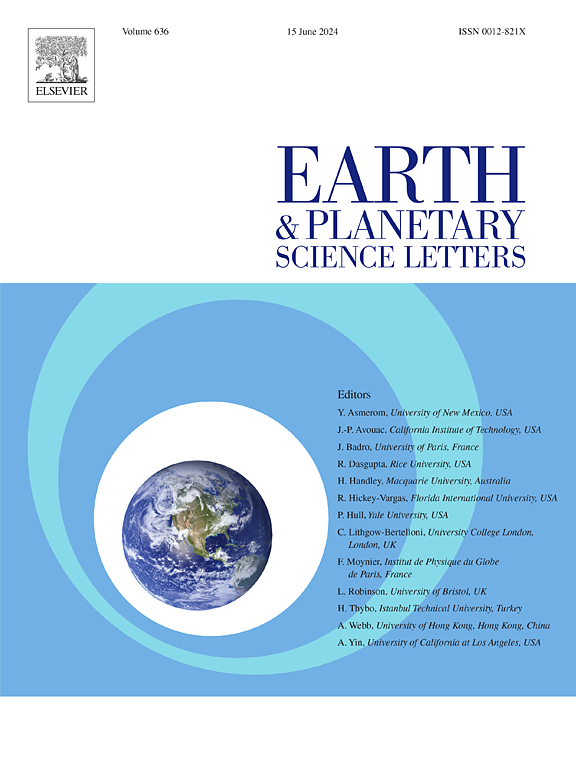东北太平洋“奋进号”主要海域喷出流体组成和金属浓度的构造变化
IF 4.8
1区 地球科学
Q1 GEOCHEMISTRY & GEOPHYSICS
引用次数: 0
摘要
海底热液喷口是响应岩浆热通量、地壳渗透性和连通性以及矿物沉淀变化的动态系统。然而,与海洋科学作业相关的后勤挑战往往阻碍了对这些动态的直接观察。在此,我们利用加拿大海洋网络公司的NEPTUNE电缆观测站的基础设施,将时间序列喷口流体样本与东北太平洋主要奋进区同期的喷口流体温度和海底地震活动记录进行了比较。我们发现先前报道的喷口流体化学变化与地震活动增加的事件相吻合。Mg与其他流体可移动元素的比值与镁和硫酸盐耗尽流体的流入一致,我们将其归因于浅海熔岩中温热液流体的活跃循环。亲铜过渡金属和类金属的浓度与喷口流体温度密切相关且敏感,表明了硫化矿物的差异沉淀/溶解。与喷口流体化学和/或温度变化相关的微地震活动加剧的事件以相对较小震级的群状爆发为特征,可能是浅源地震。综上所述,这些数据突出了喷口流体温度和化学对地震活动的敏感性,地震活动改变了近地表渗透率和海水与各种热液储层之间的连通性。本文章由计算机程序翻译,如有差异,请以英文原文为准。
Tectonically induced changes in vent fluid compositions and metal concentrations at Main Endeavour Field, northeast Pacific Ocean
Seafloor hydrothermal vents are dynamic systems that respond to changes in magmatic heat fluxes, crustal permeability and connectivity, and mineral precipitation. However, the logistical challenges associated with marine science operations often preclude direct observation of these dynamics. Here, we utilize infrastructure of Ocean Network Canada’s NEPTUNE cabled observatory to compare time-series vent fluid samples with contemporaneous records of vent fluid temperature and ocean bottom seismicity at the Main Endeavour Field, northeast Pacific Ocean. We find that previously reported changes in vent fluid chemistry coincide with episodes of increased earthquake activity. Ratios of Mg to other fluid mobile elements are consistent with influx of a Mg- and sulfate-depleted fluid, which we attribute to active circulation of intermediate-temperature hydrothermal fluids within shallow seabed lavas. Concentrations of chalcophile transition metals and metalloids are strongly correlated and sensitive to vent fluid temperature, which we propose indicates differential precipitation/dissolution of sulfide minerals. Episodes of heightened microearthquake activity associated with changes in vent fluid chemistry and/or temperature are characterized by swarm-like bursts of relatively small magnitude, likely shallow-origin, earthquakes. Together, these data highlight the sensitivity of vent fluid temperature and chemistry to seismic activity that alters near-surface permeability and connectivity between seawater and various hydrothermal reservoirs.
求助全文
通过发布文献求助,成功后即可免费获取论文全文。
去求助
来源期刊

Earth and Planetary Science Letters
地学-地球化学与地球物理
CiteScore
10.30
自引率
5.70%
发文量
475
审稿时长
2.8 months
期刊介绍:
Earth and Planetary Science Letters (EPSL) is a leading journal for researchers across the entire Earth and planetary sciences community. It publishes concise, exciting, high-impact articles ("Letters") of broad interest. Its focus is on physical and chemical processes, the evolution and general properties of the Earth and planets - from their deep interiors to their atmospheres. EPSL also includes a Frontiers section, featuring invited high-profile synthesis articles by leading experts on timely topics to bring cutting-edge research to the wider community.
 求助内容:
求助内容: 应助结果提醒方式:
应助结果提醒方式:


